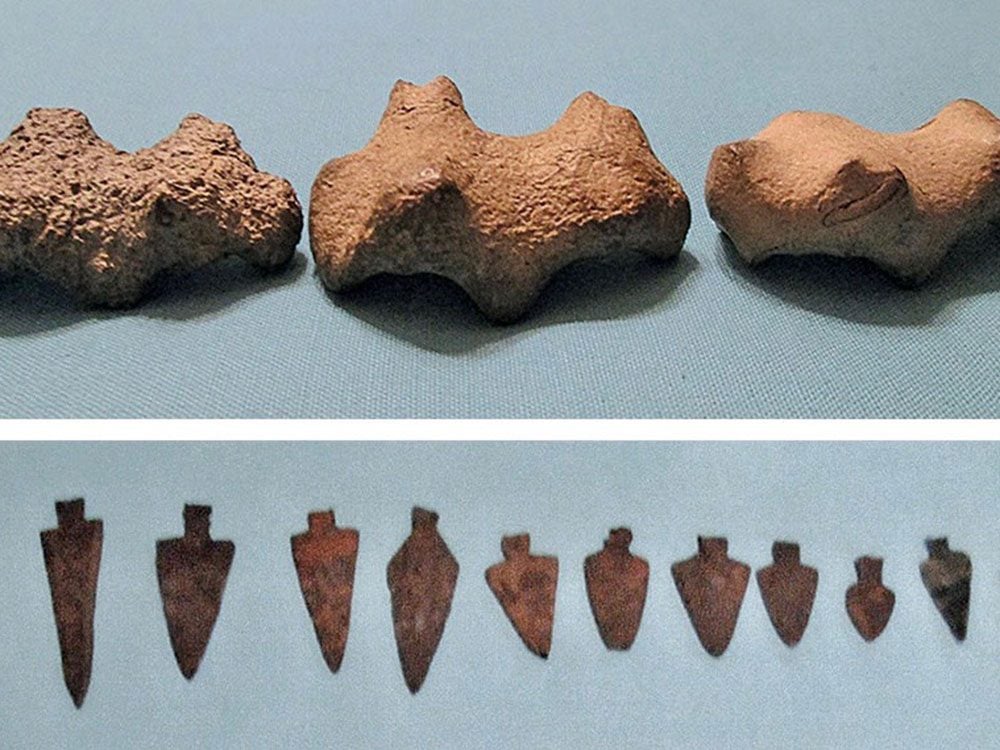Check Out This Canadian’s Amazing Arrowhead Collection!
My artifact-hunting days are now behind me, but I still derive a sense of satisfaction from my collection— 1,000 perfect and near-perfect arrowheads being the most treasured items of all.

The life of an artifact hunter
In the fall of 1957, I arrived in the hamlet of Bindloss, Alta., to teach school. I met and married Bill Picotte, the range rider of the Remount Community Pasture in the area. The ground in and around Bindloss was very sandy and, combined with high winds and drought, the surrounding farmland was prone to erosion, as were the man-made fireguards in the large community pasture. It takes a lot of wind and drifting sand and soil to expose the land right down to the hardpan, and dust storms as dense as winter blizzards often resulted. Such was the situation we lived in at the time, but there was at least one silver lining—finding once-buried artifacts from long ago became a realistic, entertaining and educational pursuit.
We first began searching for arrowheads in the early 1960s, and it soon became the most enjoyable hobby I’ve ever had. It was a real thrill to find a perfect arrowhead, and some were absolute works of art. We found many arrowheads of rare beauty chipped from flint, chalcedony, quartz, jasper, obsidian, petrified wood and chert. Others were made from plain field stone.
There were also many other artifacts to be found, such as stone awls, knives and hammers; fleshing tools we called scrapers; spokeshaves, which were used long ago to remove bark from the shafts upon which the arrowheads were mounted; and iniskim, or buffalo calling stones, which are fossils resembling miniature buffalo that, according to Native oral tradition, had the power to summon buffalo herds in times of hunger. We also found clay pottery shards and shell beads; musket balls, lead bullets and casings; old coins, buttons and so much more.
Along with our artifacts, we’d bring home interesting pieces of petrified wood and multi-coloured rocks, which led to the purchase of a rock polish and another relaxing activity for me, rock polishing.
I was an avid artifact hunter and spent many enjoyable hour combing the fields, while reaping the benefits of fresh air and exercise, and enjoying nature. Bill joined me from to time to time, but he disliked walking, often saying, “That’s what horses are for!” It wasn’t uncommon to come across wildlife while we were afield. There were birds aplenty and I would occasionally encounter rattle snakes. One time, I came across a baby antelope, with its neck outstretched and its head on the ground, seemingly taking a little rest while its mother was off grazing nearby.
The best time of year to hunt was early spring before the farmers began to work the land. With today’s farming methods, there is little or no soil erosion, but back then, the erosion could be quite pronounced throughout the planting and growing seasons, and when it was, late fall would also become a great time to hunt for artifacts.
My artifact-hunting days are now behind me, but, in addition to many memories of being out on the land, I still derive a sense of satisfaction from my artifact collection— 1,000 perfect and near-perfect arrowheads being the most treasured items of all.
Take a peek at this Canadian’s impressive antique collection!



